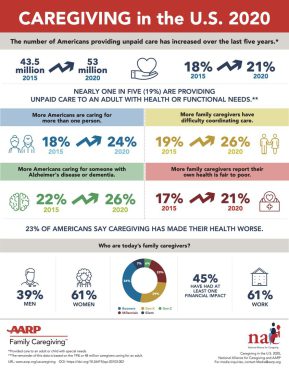There Are No "Snow Days" for Caregivers
Depending on where you live, the "Snow Days" days are piling up like the snow! Unfortunately, for millions of American caregivers, regardless of how deep the snow gets or how bad the roads are, they won't get a "school's closed" robocall giving them a pass for the day.....
Weather is just one of the factors that make providing care for a family member, friend, or someone who is simply unable to care for themselves a physically demanding and emotionally draining role. This isn’t a new phenomenon, as families have always been providing care for the older generation. However, caregiving is another uncomplicated way to help explain the importance of Long-Term Care Planning to clients. At the very least, it better positions families to have professional caregivers do the things their spouses or loved ones can no longer do for themselves....according to the National Alliance for Caregiving, the trend in the United States below paints an alarming picture of a growing problem:
The Economics of Providing Care.....
Researchers from Rice University released data that “shows in all 50 states, including Washington D.C., that families with members having disabilities (including illness), live in poverty at a higher rate. In fact, the same research shows that female family caregivers are 2.5 times more likely to live in poverty than non-caregivers, and caregiving households have more than a 15% lower income than non-caregiving households.”
Since 2008, various difficult economic periods have only served to amplify the financial problem. In fact, 20% of caregivers had to move in with those they were caring for to reduce expenses, as reported by the National Alliance for Caregiving. And, despite efforts to reduce expenses, 47% of working caregivers report continuing increased expenses caused them to use all of their savings, which directly impacts the financial security and retirement plans for caregivers. For the average family caregiver, caring for someone over the age of 50, the caregiver is, on average, spending $5,531 per year out of pocket just for expenses not covered by insurance or Medicare. This is more than 10 percent of the average income for caregivers, according to AARP.
The next time your clients are stuck at home on a cold, snowy winter day, maybe that’s your opportunity to engage some of them about Long-Term Care Planning and ask them a simple question: Who would be responsible for your care on a day like this if you could no longer handle that responsibility.....
The impact of Long-Term Care affects an entire family, so we encourage you to engage clients and discuss ways to proactively address this likely missing piece in their plan.
240124


